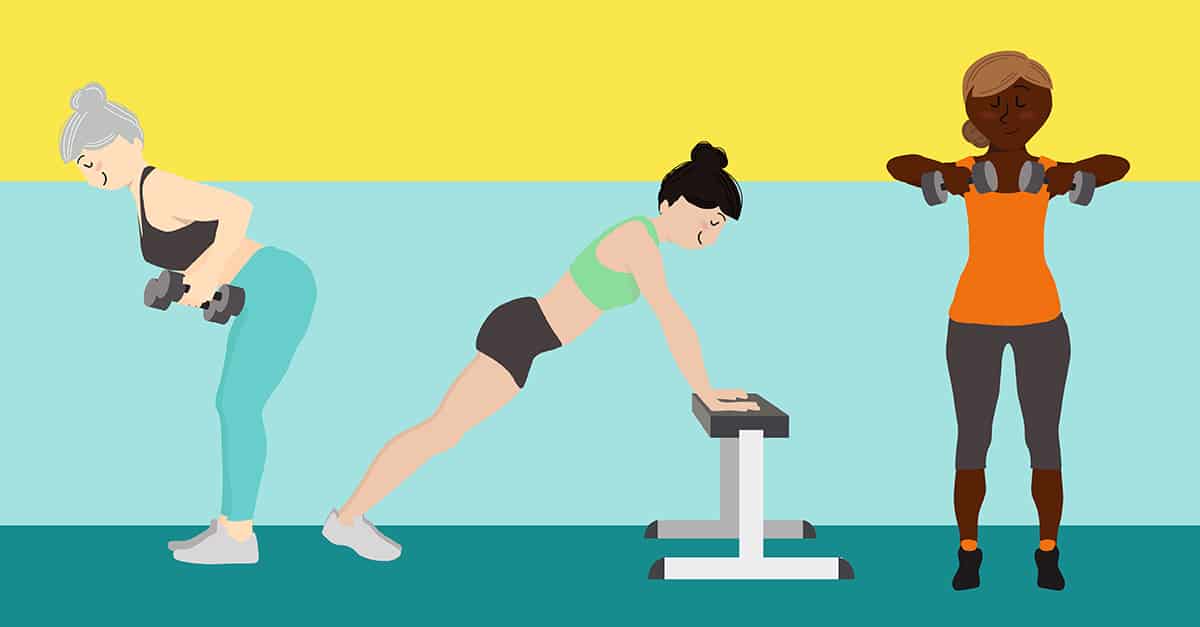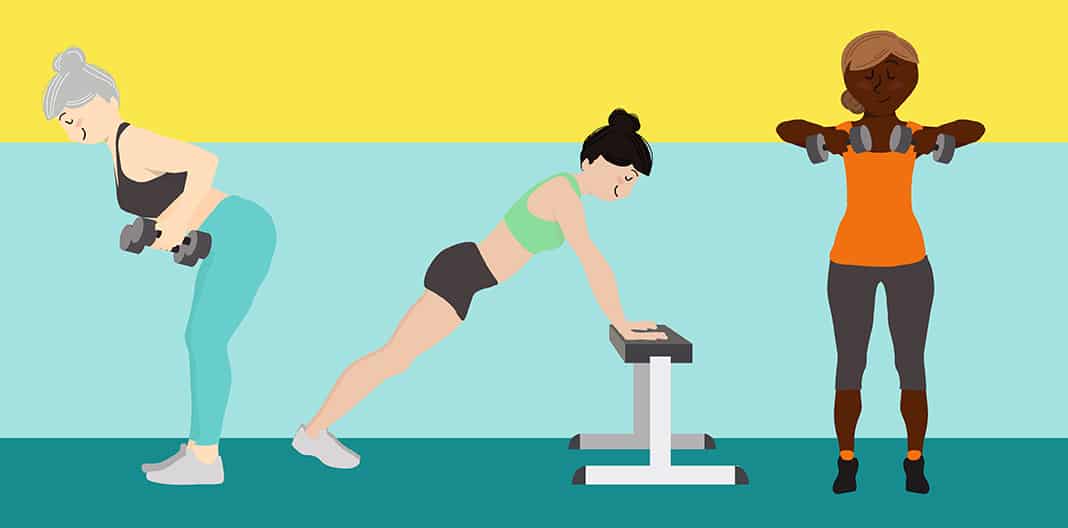Bodacious biceps and bolder shoulders dominate the discussion when it comes to upper body strength training. However, building a strong, powerful upper body does more than split sleeves and garner attention.
With a solid upper body resistance-training plan, selling tickets to the gun show is the proverbial icing on the cake. But aesthetics aren’t the only reason you should strengthen your upper body. Check out the often overlooked health benefits of sculpting lean, mean muscle in your arms, shoulders, back, and chest.
Benefits of upper body strength
Improves posture
Technology and jobs leave many of us seated in hunched-over positions for long hours during the day. This causes tightness in certain muscles and weakness in others. Exercising the shoulders and back with weights and other forms of resistance, such as bands, helps balance your muscles and improves spinal alignment and shoulder positioning.
Reduces injury risk
Daily activities including carrying groceries, picking up small children, and putting away laundry can create muscle imbalances. Upper body exercises reduce injury risk by improving the strength of muscle, ligaments, tendons, and bones that support joints in the wrists, elbows, shoulders, and spine.
Slows aging
As you age, the presence of skeletal muscle tissue declines. This process, known as sarcopenia, is the most common cause of functional decline and loss of independence in older adults. Resistance training for the upper body helps improve muscle quality and tone, increase bone density, and protect joint health.
Tips to build a strong upper body
Building upper body strength goes beyond curls and bench press. These tips will guide you in the right direction when beginning your new routine.
Focus more on pull exercise than push exercise
Though it’s important to incorporate both upper body pull and push exercises into your routine, pulling trains the posterior chain of the body, which often weakens from seated work and a sedentary lifestyle. The posterior chain includes muscles along the back of the body that are involved in many movements including running, jumping, squatting, turning, and walking (to name a few).
Pulling exercises use muscles to pull weight toward the body during the concentric or contraction phase of the movement. Pushing exercise use the muscles to push weight away from the body during the concentric phase of the movement.
A good rule to follow: For every pushing exercise you perform (push-up, bench press, overhead press, for example) you should perform two pulling exercises (pull-up, lat pull down, seated row, for example).
Add variety
It’s easier to walk into the gym and go for the old stand-by exercises like biceps curls and chin-ups than it is to create fresh, bi-weekly routines. But adding variety to your program trains your body more efficiently and prevents muscular imbalances as well as overuse of certain muscles and joints.
Change the exercises, tempo, sets, reps, and rest duration, and length of training circuits too—single sets, supersets, or circuits.
Putting it all together
Try this 30-minute upper body push-pull bodyweight and dumbbell routine for the next 8 weeks to build strength and tone. We recommend performing each workout once a week.


